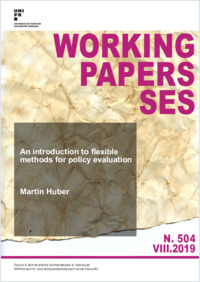An introduction to flexible methods for policy evaluation
BP2-STS
-
01.08.2019
49 p.
Policy evaluation
treatment effects
machine learning
experiment
selection on observables
instrument
difference-indifferences, changes-in-changes
regression discontinuity design
regression kink design
English
This chapter covers different approaches to policy evaluation for assessing the causal effect of a treatment or intervention on an outcome of interest. As an introduction to causal inference, the discussion starts with the experimental evaluation of a randomized treatment. It then reviews evaluation methods based on selection on observables (assuming a quasi-random treatment given observed covariates), instrumental variables (inducing a quasi-random shift in the treatment), difference-in- differences and changes-in-changes (exploiting changes in outcomes over time), as well as regression discontinuities and kinks (using changes in the treatment assignment at some threshold of a running variable). The chapter discusses methods particularly suited for data with many observations for a flexible (i.e. semi- or nonparametric) modeling of treatment effects, and/or many (i.e. high dimensional) observed covariates by applying machine learning to select and control for covariates in a data-driven way. This is not only useful for tackling confounding by controlling for instance for factors jointly affecting the treatment and the outcome, but also for learning effect heterogeneities across subgroups defined upon observable covariates and optimally targeting those groups for which the treatment is most effective.
- Collections
- Faculty
- Faculté des sciences économiques et sociales et du management
- Language
-
- English
- Classification
- Economics
- Other electronic version
- Series statement
-
- Working Papers SES ; 504
- License
- License undefined
- Identifiers
-
- RERO DOC 326900
- RERO R008951714
- Persistent URL
- https://folia.unifr.ch/unifr/documents/308142
Statistics
Document views: 148
File downloads:
- WP_SES_504.pdf: 301
